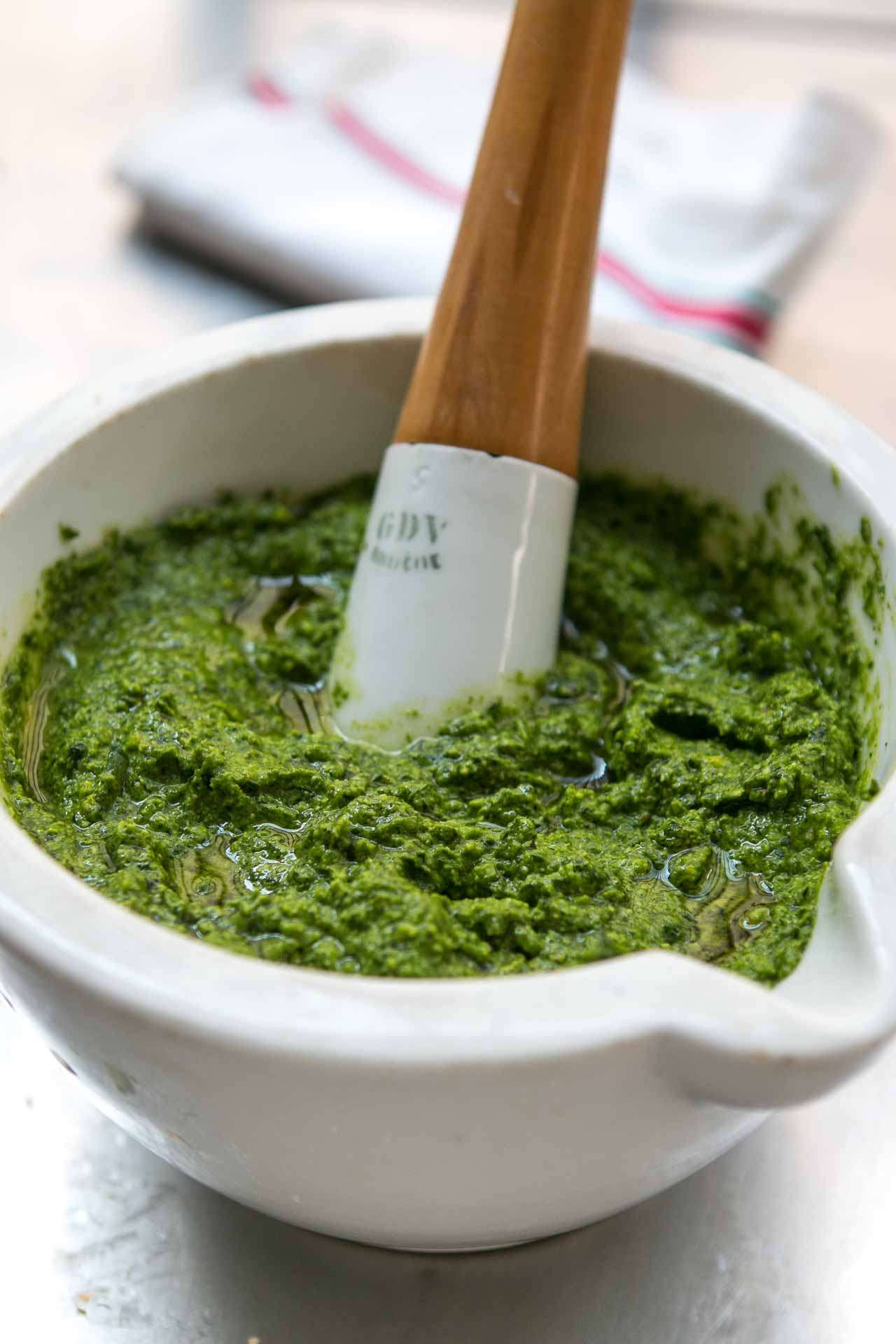
0.0 from 0 votes
Pesto
Be sure to rinse and dry the basil leaves well. I give mine a shake outside my kitchen window. I haven’t lost a leaf yet. (Although some of the people down below on the sidewalk might wonder where that basil-scented mist is coming from.) Those of you who prefer to live less vicariously can use a salad spinner or shake them in a tea towel.
If using a food processor or blender, or similar device, I recommend grinding up the nuts, garlic and cheese first, then adding the remaining ingredients and pureeing them until smooth. No need to pre-chop the basil leaves – just add them right in, and stop the food processor a few times to scrape down the sides as you go.
Course:
Condiments , Others
Ingredients
- 2 cloves garlic peeled
- 3/4 teaspoon coarse salt
- 5 cups (120g) loosely-packed basil leaves
- 5 tablespoons (75ml) best-quality olive oil
- 2 ounces (60g) grated Parmesan cheese
- 1/4 cup (30g) pine nuts walnuts, or shelled pistachios, very lightly toasted
Instructions
- Smash the garlic and salt together in a mortar and pestle until smooth. (You can also use a blender or food processor. See headnote for instructions)
- Coarsely chop the basil leaves, then add them to the mortar and pounding them into the garlic as you add them.
- Once well-mashed, when they’ve become a fairly smooth paste, pound in the olive oil, adding it a spoonful at a time, until well-incorporated.
- Lastly, pound in the cheese, then the pine nuts.
- Continue mashing everything for a few minutes until the pesto is as smooth as possible.
Cup of Yum
Notes
- Fresh pesto should be served within a day or two after it’s made. Otherwise the garlic can become overpowering. It can also be frozen for a few months, if well-wrapped.
- Note: Curiously, although I don’t think it’s so traditional, I used to eat at a pasta restaurant in San Francisco that made the best pesto pasta. It was simply prepared and delicious; just a hot pasta tossed with lots of pesto. It wasn’t until I ate their alone and sat at the counter, which had a view of the kitchen, and I saw the cooks adding almost a full stick of butter to each pasta as they swirled it in the pan with the pesto! I don’t think you need to eat a stick of butter with your pasta, but at the risk of upsetting traditionalists, a small pat of butter does round out the taste of the pasta pretty well. And I’ve know good cooks to sneak in some Emmental cheese along with the Parmesan.